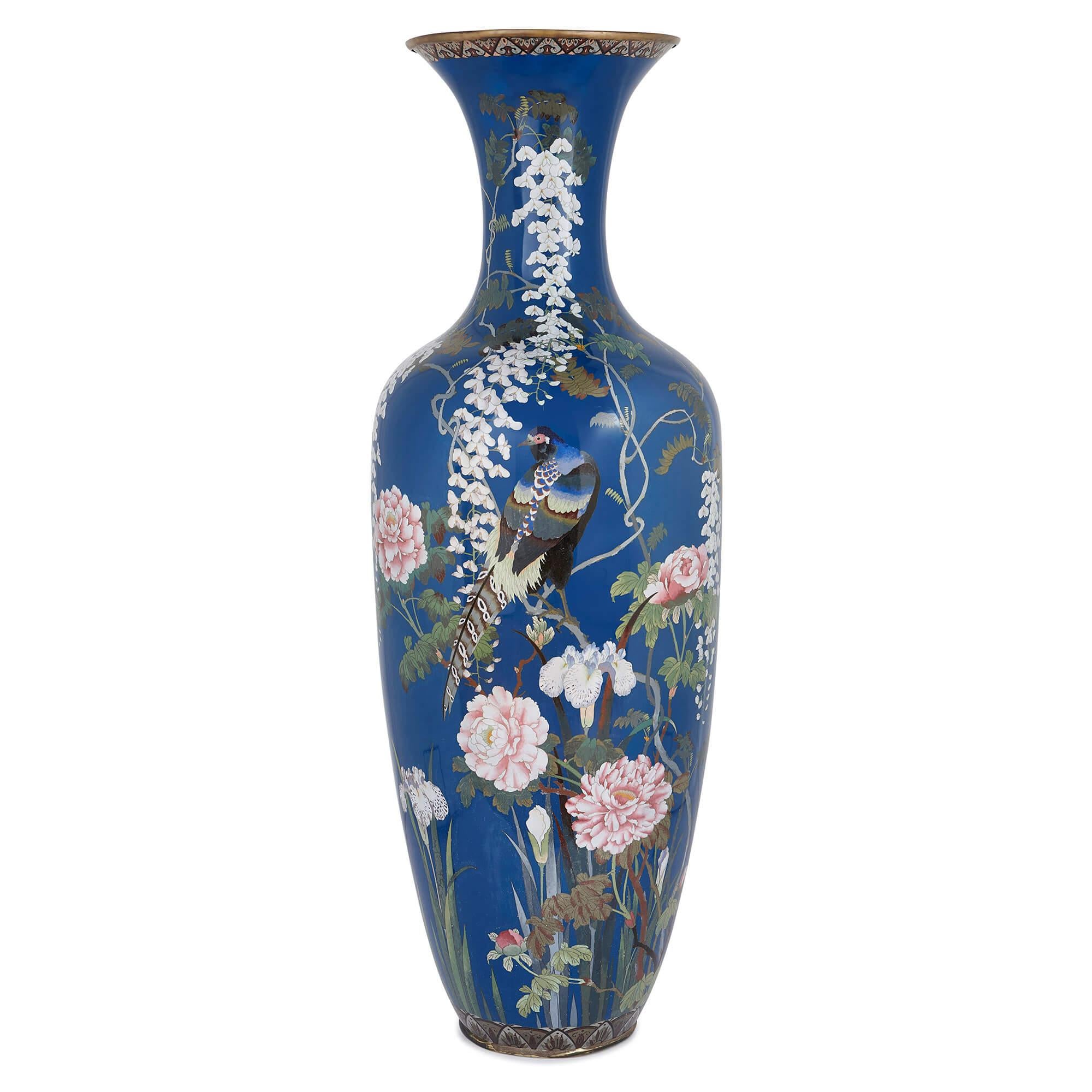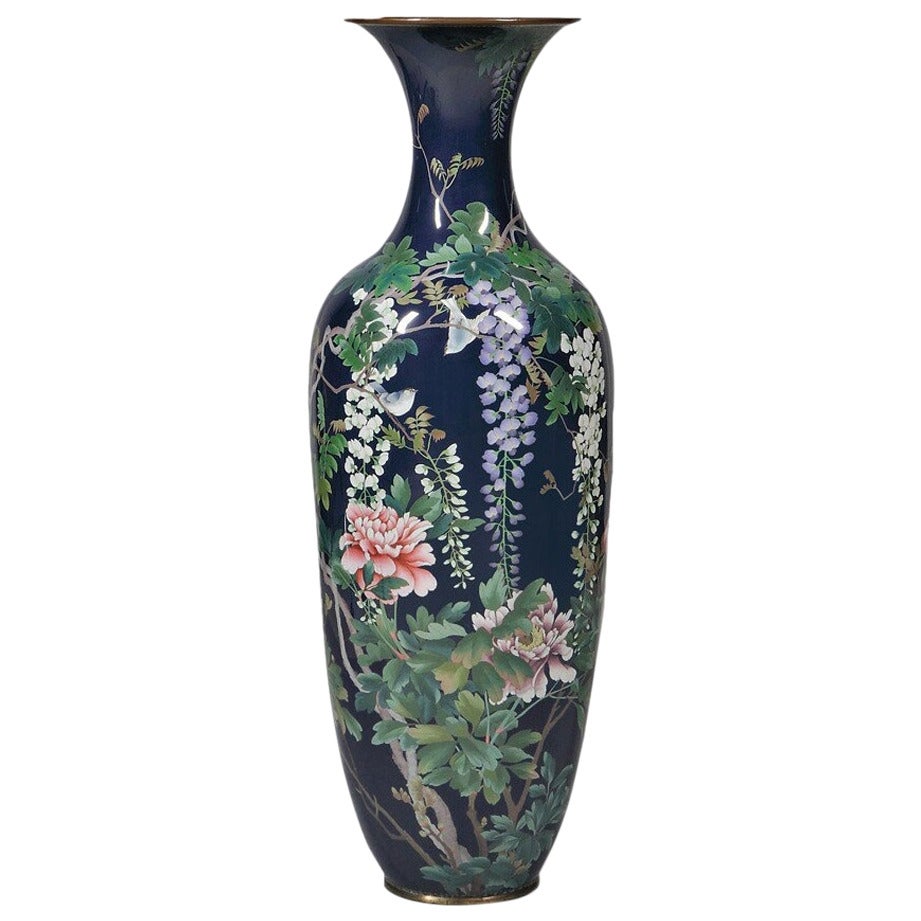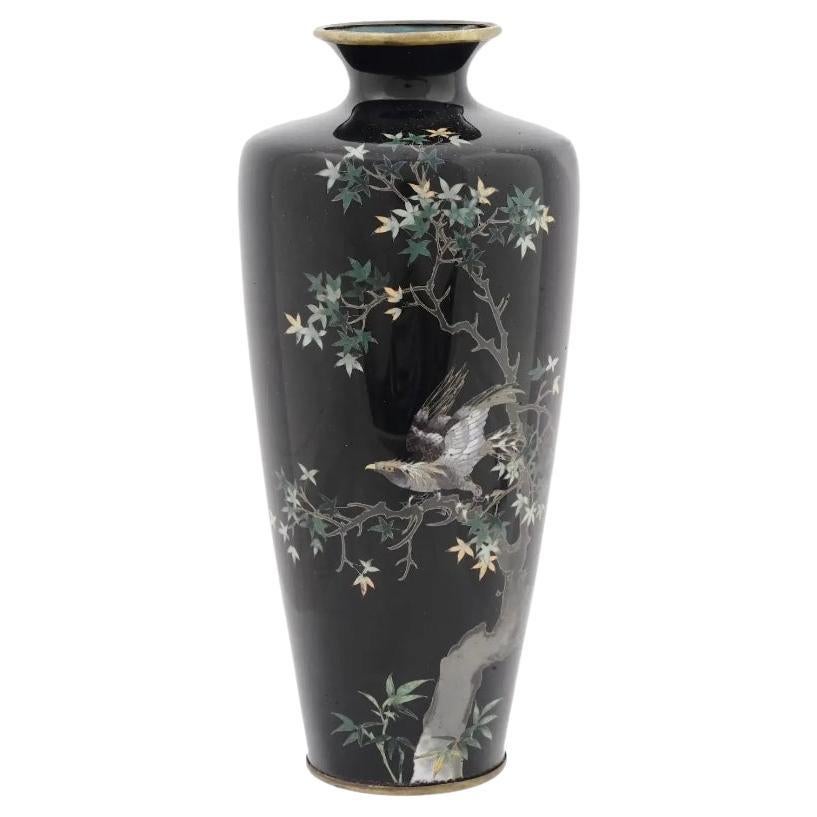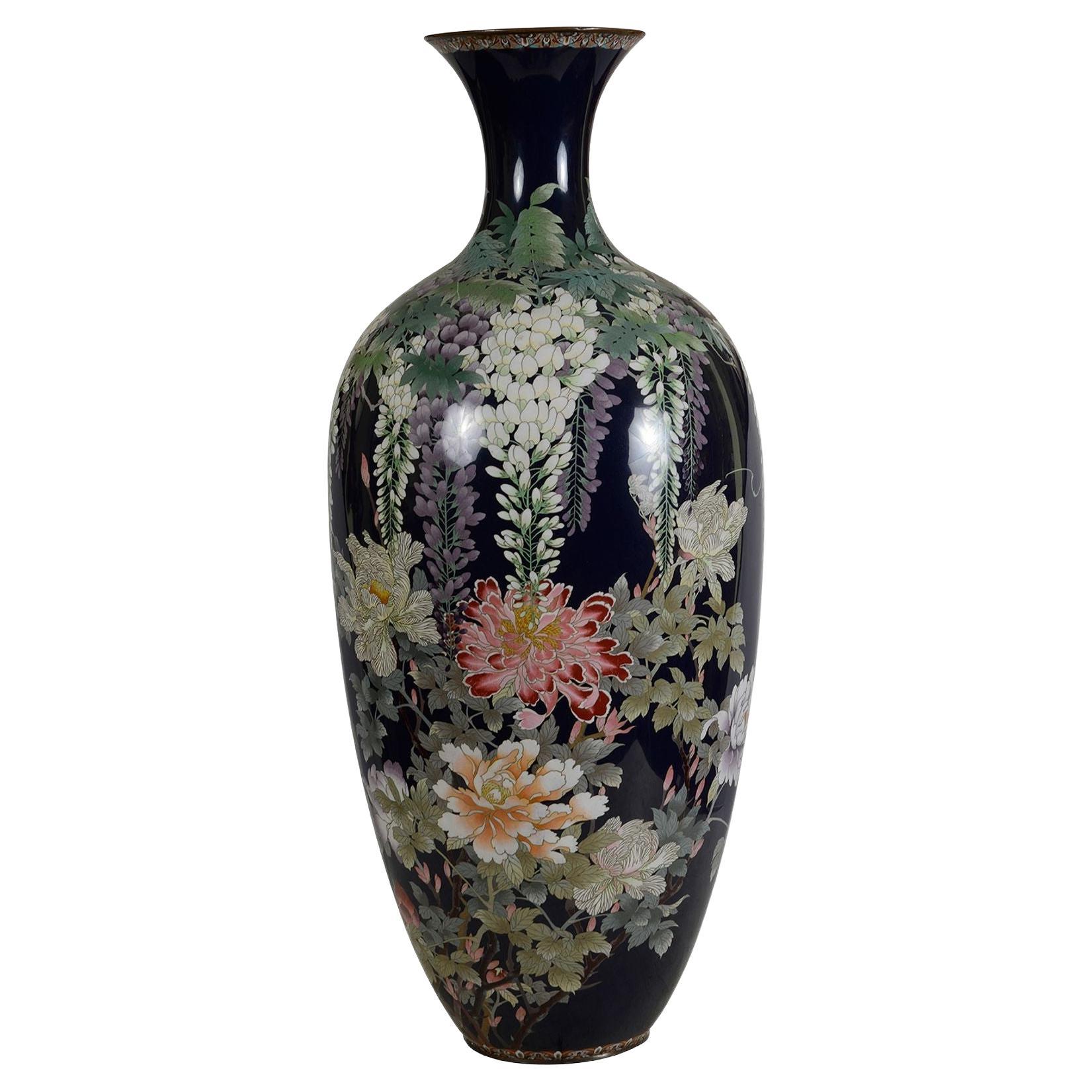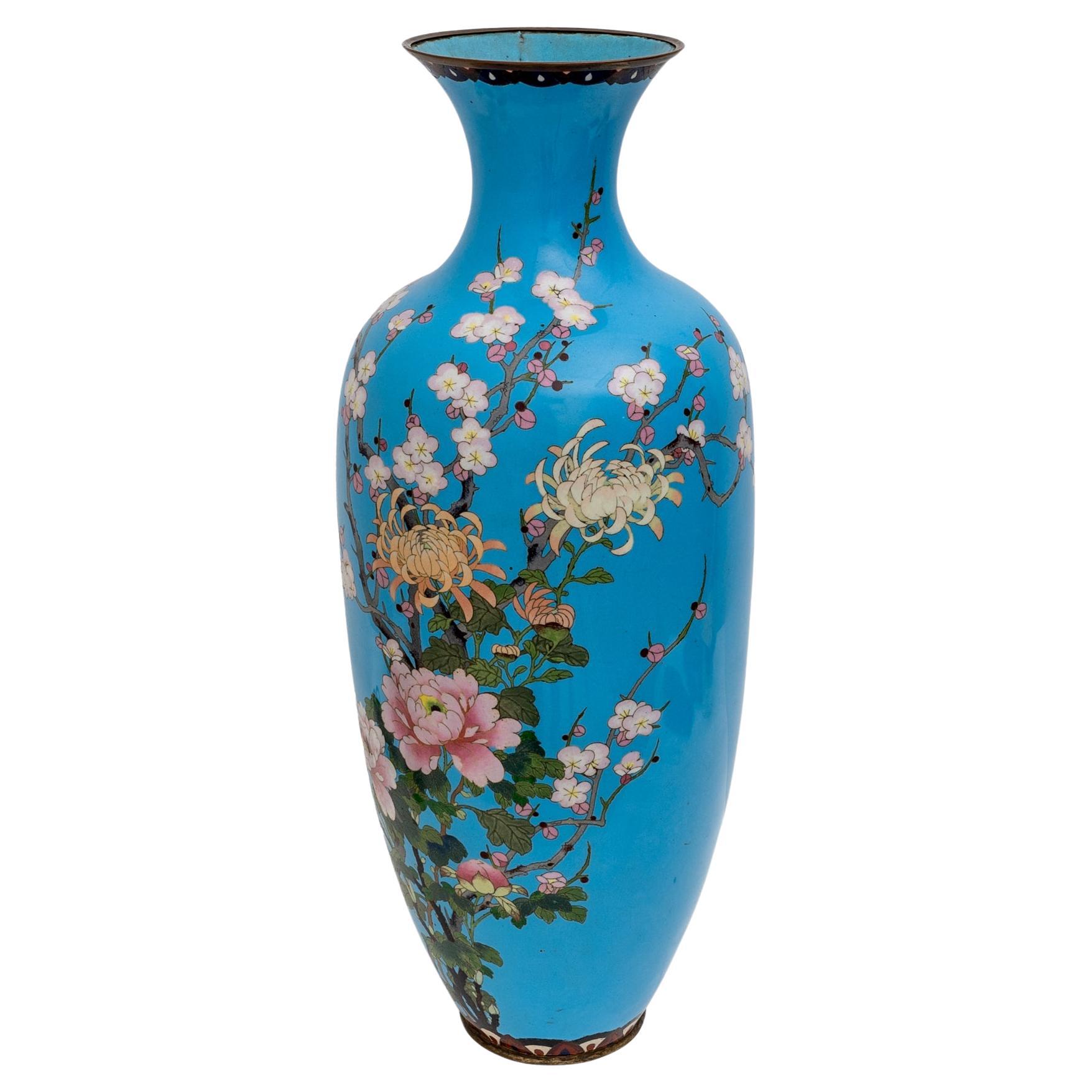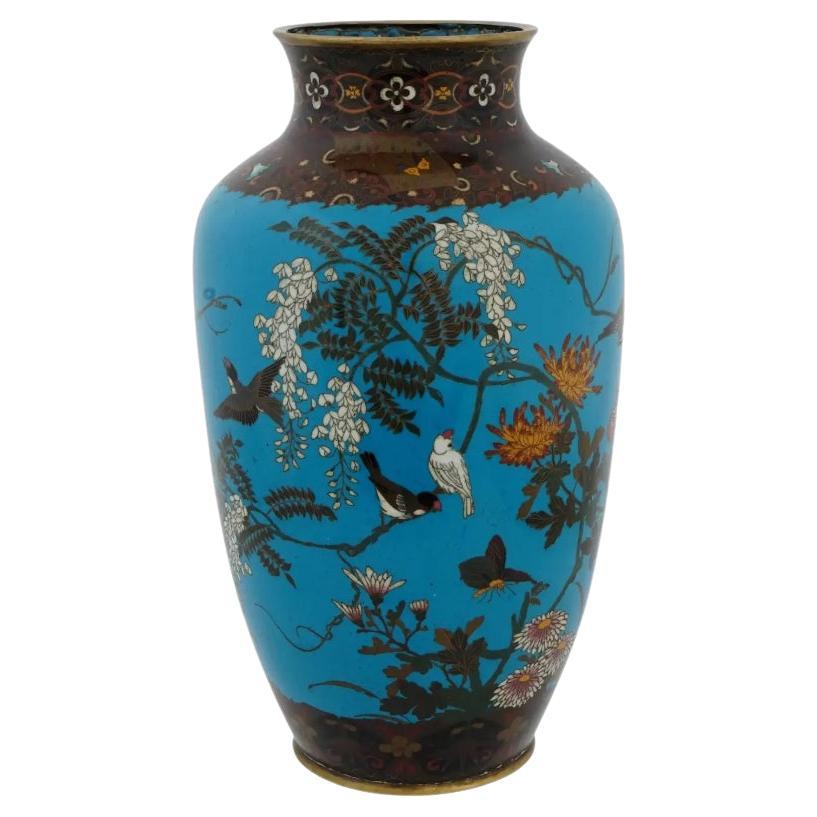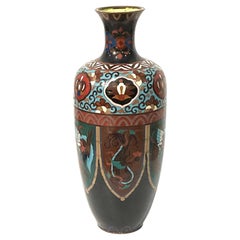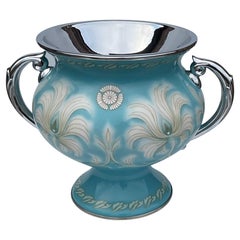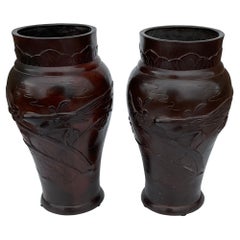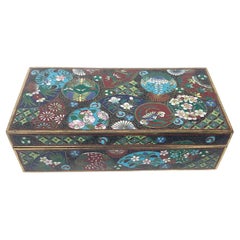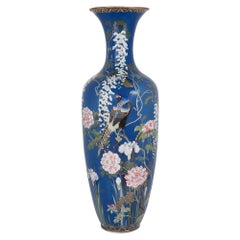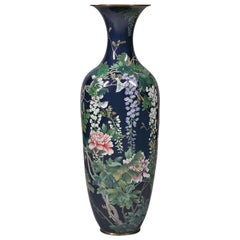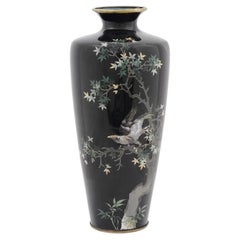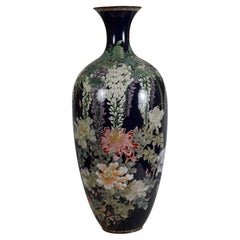Items Similar to Large Meiji Era Cloisonne Vase with amazing bird decoration
Want more images or videos?
Request additional images or videos from the seller
1 of 10
Large Meiji Era Cloisonne Vase with amazing bird decoration
$3,000
$4,00025% Off
£2,262.78
£3,017.0325% Off
€2,613.53
€3,484.7025% Off
CA$4,203.21
CA$5,604.2825% Off
A$4,673.72
A$6,231.6325% Off
CHF 2,446.78
CHF 3,262.3725% Off
MX$57,090.42
MX$76,120.5625% Off
NOK 30,746.19
NOK 40,994.9225% Off
SEK 28,922.95
SEK 38,563.9425% Off
DKK 19,509.80
DKK 26,013.0725% Off
About the Item
Meiji Period amazing Japanese Cloisonne vase.
Meiji Period
(1868-1912). The reign of Emperor Meiji and the beginning of Japan's modern period. It started on October 23, 1868, when the 16-year-old emperor Mutsuhito selected the era name "Meiji" ("enlightened rule") for his reign; the emperor himself is therefore posthumously known as Meiji. The period commenced with the collapse of the Tokugawa Shogunate and the sweeping reforms attendant upon the Meiji Restoration; it was followed by the Taishï¿ Period (1912-26). The Meiji period saw Japan's transformation from a feudal polity into a modern industrial state, along with its emergence from isolation into the ranks of major world powers. During the early years of the Meiji period, feudal domains were abolished, the samurai class was phased out, a national education program was implemented, and major institutions (military, banking, industrial production, taxation, etc.) were transformed along Western models. In 1889, a new constitution was approved. The constitution invested the emperor with full sovereignty, declaring him "sacred and inviolable". In spite of its emphasis on the emperor, however, the constitution marked a genuine step toward popular participation. Japan's victories in the Sino-Japanese War (1894-95) and the Russo-Japanese War (1904-05), along with Japan's annexation of Taiwan (1895) and Korea (1910) brought international recognition of Japan's sphere of hegemony in Northeast Asia. But with inroads by Western liberalism and the fear of unrest in the now-industrialized urban centers, Meiji leaders started focusing on upholding Japan's "traditional" institutions. Emperor Meiji, now associated with success in war and always the symbol of modernization, was therefore raised to new heights of reverence. Textbooks in the compulsory school system course in ethics increasingly emphasized national and military heroes as models. The family systems, formally established by an 1898 supplement to the Civil Code, took the samurai family as the norm for the entire nation. The commonwealth was now described as a "family state" in which political and familiar loyalties reinforced each other. The Home Ministry undertook to place the native cult of Shinto at the service of the government. The Meiji period thus left succeeding generations of Japanese with an ambiguous heritage. By the time of the emperor's death in 1912, Japan stood as a model of rapid and largely successful modernization. In less than half a century it had developed from an isolated, semifeudal society into a modern state that had secured for itself a prominent place in the world community. At the same time, the rapidity of this change had left a number of difficult social problems unresolved and a tendency toward authoritarian solutions that threatened its fledgling constitutional order. Historians' interpretations of the Meiji period, therefore, vary according to their assessment of the conflicting elements of the Meiji legacy; they are unaminous, however, in seeing it as the foundation of Japan's modern experience.
- Dimensions:Height: 22.75 in (57.79 cm)Width: 9.25 in (23.5 cm)Depth: 9.25 in (23.5 cm)
- Materials and Techniques:
- Period:1900-1909
- Date of Manufacture:1900s
- Condition:Wear consistent with age and use.
- Seller Location:Ann Arbor, MI
- Reference Number:1stDibs: LU6641228490362
About the Seller
5.0
Vetted Professional Seller
Every seller passes strict standards for authenticity and reliability
Established in 1990
1stDibs seller since 2022
47 sales on 1stDibs
Typical response time: 3 hours
- ShippingRetrieving quote...Shipping from: Ann Arbor, MI
- Return Policy
Authenticity Guarantee
In the unlikely event there’s an issue with an item’s authenticity, contact us within 1 year for a full refund. DetailsMoney-Back Guarantee
If your item is not as described, is damaged in transit, or does not arrive, contact us within 7 days for a full refund. Details24-Hour Cancellation
You have a 24-hour grace period in which to reconsider your purchase, with no questions asked.Vetted Professional Sellers
Our world-class sellers must adhere to strict standards for service and quality, maintaining the integrity of our listings.Price-Match Guarantee
If you find that a seller listed the same item for a lower price elsewhere, we’ll match it.Trusted Global Delivery
Our best-in-class carrier network provides specialized shipping options worldwide, including custom delivery.More From This Seller
View AllBright and Colorful Chinese Multi Color Cloisonné Vase with Panels of Dragons
Located in Ann Arbor, MI
Bright and Colorful Chinese multi color Cloisonné vase with panels of dragons. Very complicated work with amazing and precise detail and coloration.
Category
Vintage 1920s Chinese Vases
Materials
Enamel
Ando Large Cloisonne Japanese Royal Presentation Vase with Royal Crest Signed
By Ando Jubei
Located in Ann Arbor, MI
Ando Large Cloisonne Japanese royal presentation vase with royal crest in vibrant blue with amazing decorative handles. Signed on the bottom with An...
Category
Vintage 1930s Vases
Materials
Enamel
$15,400 Sale Price
30% Off
Pair Japanese Bronze Meiji Era Vases with Multiple Birds on Branches Signed
Located in Ann Arbor, MI
Pair Japanese Bronze Meiji Era vases with multiple birds on branches very detailed with multiple ways to display. Both vases are signed as shown.
Category
Antique Early 1900s Japanese Meiji Vases
Materials
Bronze
Japanese Cloisonne Detailed Antique Decorative Box Incredible Colors Design
Located in Ann Arbor, MI
Japanese Cloisonne Detailed Antique decorative box with incredible colors detail and design. Most likely Meiji Era.
Category
Vintage 1910s Japanese Decorative Boxes
Materials
Enamel
Large Matching Pair Satsuma Meiji Era Figural Vases Figures in Clouds Gold Leaf
By Satsuma
Located in Ann Arbor, MI
LARGE Matching Pair Satsuma Meiji Era Figural vases figures in clouds gold leaf. Amazing multi color decoration. Vases display prominently from any decor...
Category
Antique Early 1900s Japanese Meiji Pottery
Materials
Pottery
Bright Yellow Signed Chinese Pair of Porcelain Vases with Dragon Decoration
Located in Ann Arbor, MI
Bright Yellow Signed Chinese Pair of Porcelain vases with dragon decoration. Signature on bottom of each vase as shown.
Category
Vintage 1920s Chinese Vases
Materials
Porcelain
You May Also Like
Very Large Japanese Meiji Period Cloisonne Enamel Vase
Located in London, GB
This stunning Meiji period vase is a wonderful example of the quality of craftsmanship during the late 19th century Japanese Meiji period. The Meiji era was famed for being the perio...
Category
Antique Late 19th Century Japanese Meiji Vases
Materials
Enamel
$35,311 Sale Price
20% Off
Large Meiji Period Cloisonne Enamel Vase
Located in London, GB
Of ovoid form, with a narrow neck and outward flaring rim, on dark blue ground depicting wisteria blossoms in white and purple cascading from the shoulder with birds throughout and w...
Category
Antique Late 19th Century Japanese Meiji Vases
Materials
Enamel
A High Quality Antique Meiji Japanese Cloisonne Enamel Vase With Flying Eagle
Located in Long Island City, NY
An antique Japanese Meiji Era brass and enamel vase. Circa: early 20th century. The baluster form vase is enameled with a polychrome image of an...
Category
Antique Late 19th Century Japanese Meiji Vases
Materials
Brass, Enamel
Impressive Japanese Cloisonné vase, C19th. 94cm high
Located in Brighton, Sussex
This exquisite Japanese Meiji (1868-1912) period cloisonné enamel vase, standing at 94 cm,(37") showcases the artistry of the era. Adorned with intricate floral motifs, including vib...
Category
Antique Late 19th Century Japanese Vases
Materials
Enamel
19th Century Large Japan Vase "Cloisonne" With Floral Decoration, Meiji Period
Located in Puglia, Puglia
Large antique Japanese vase. Dating from the late Meiji period, 19th century.
Made of copper and brass with 'Cloisonne' polychrome enamel decorations.
Cloisonne is a very ancient t...
Category
Antique Late 19th Century Japanese Meiji Vases
Materials
Brass, Copper
$7,643 Sale Price
20% Off
Large Antique Japanese Meiji Cloisonne Enamel Vase
Located in Long Island City, NY
An antique Japanese copper vase with polychrome cloisonne enamel decor. Late Meiji period, before 1912. Baluster shape, flower brunches and birds decor against turquoise background. ...
Category
Antique Late 19th Century Japanese Meiji Vases
Materials
Copper, Enamel
More Ways To Browse
Antique Japanese Cloisonne Vase
Meiji Cloisonne Vase
Large Cloisonne
Asian Vase With Birds
Cloisonne Bird
Cloisonne Vase Bird
Antique Korean Vases
Meiji Samurai
Samurai Vase
Art Deco Italian Glass Vase
Italian Blue Venetian Glass
Blue Crystal Vase
Green Celadon
Twist Vase
Vase Ceramic Italy 1960
Flower Vase Purple
French 1920 Ceramic
Vintage Black Murano Vase
